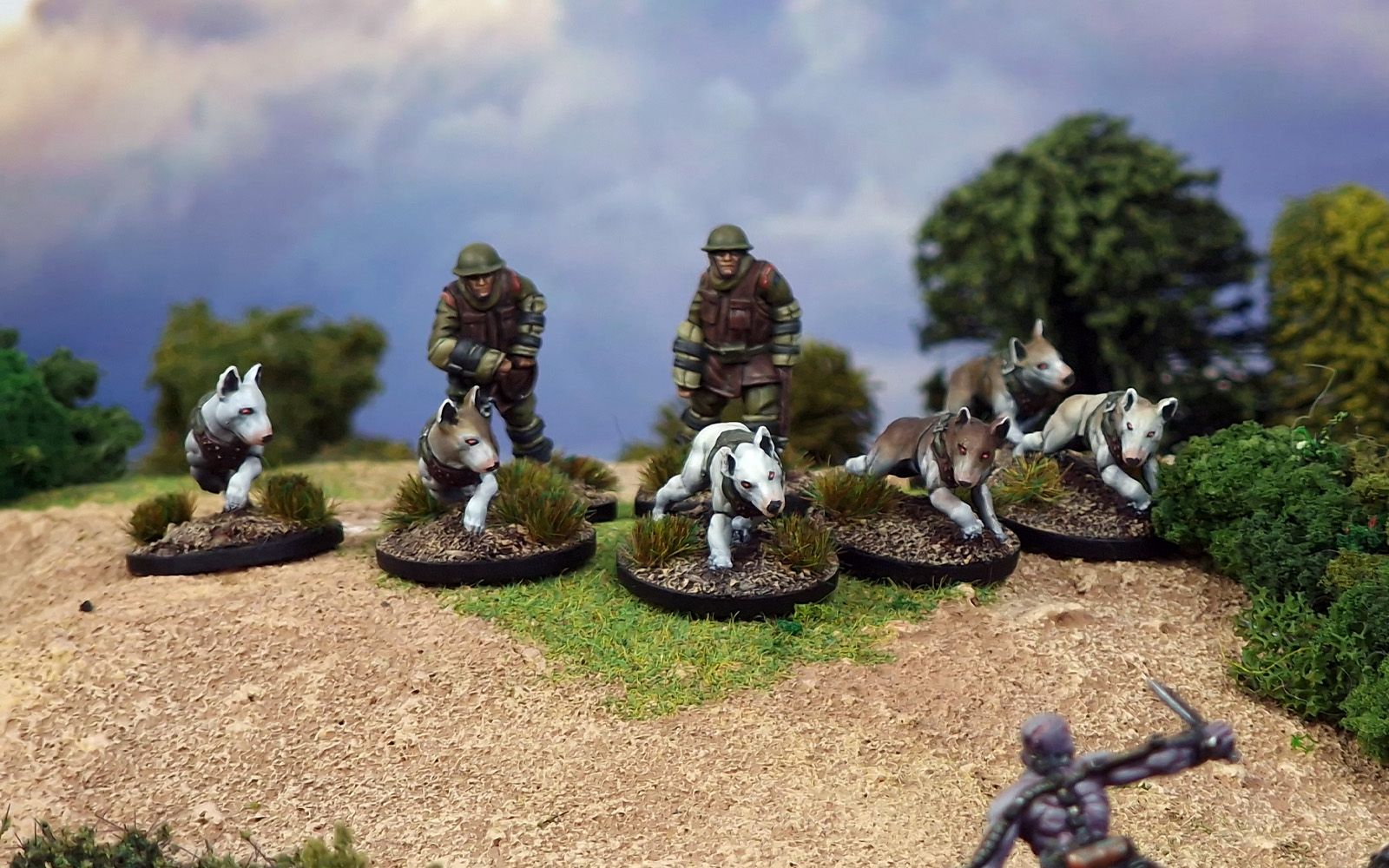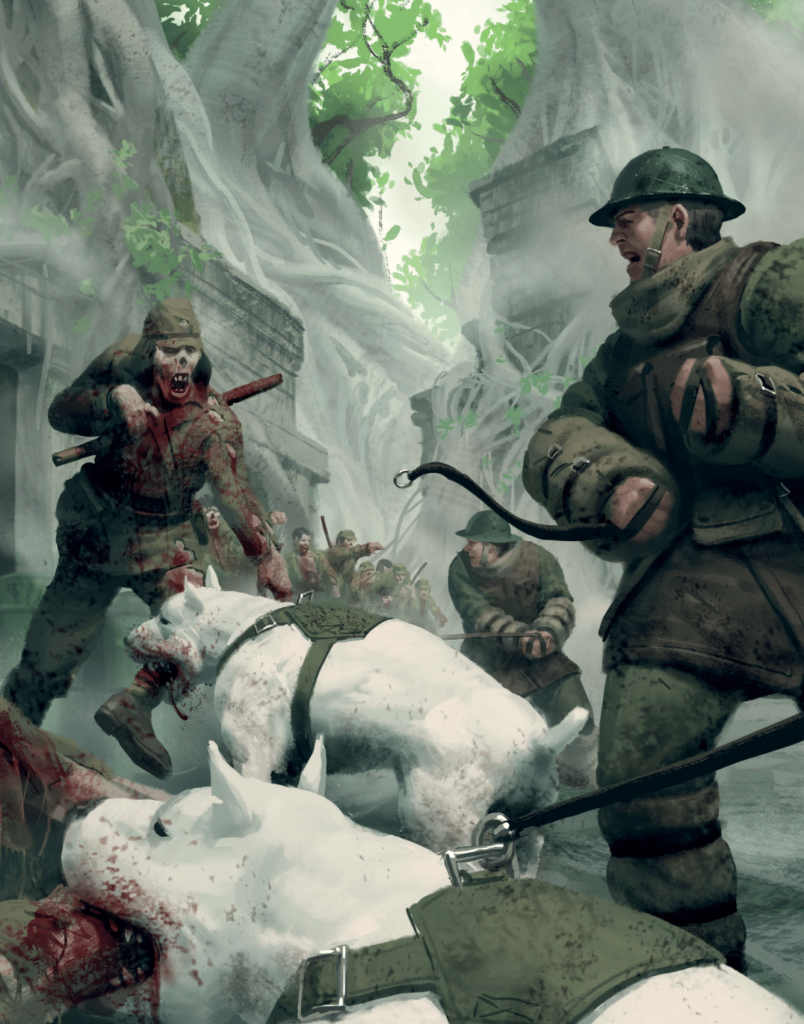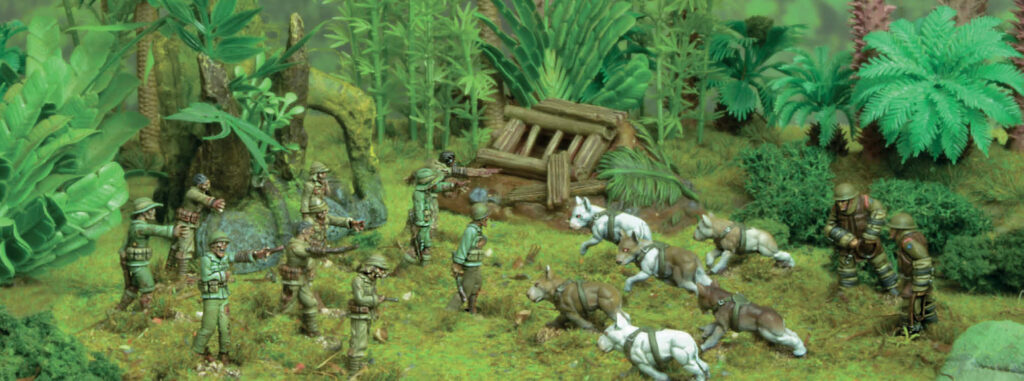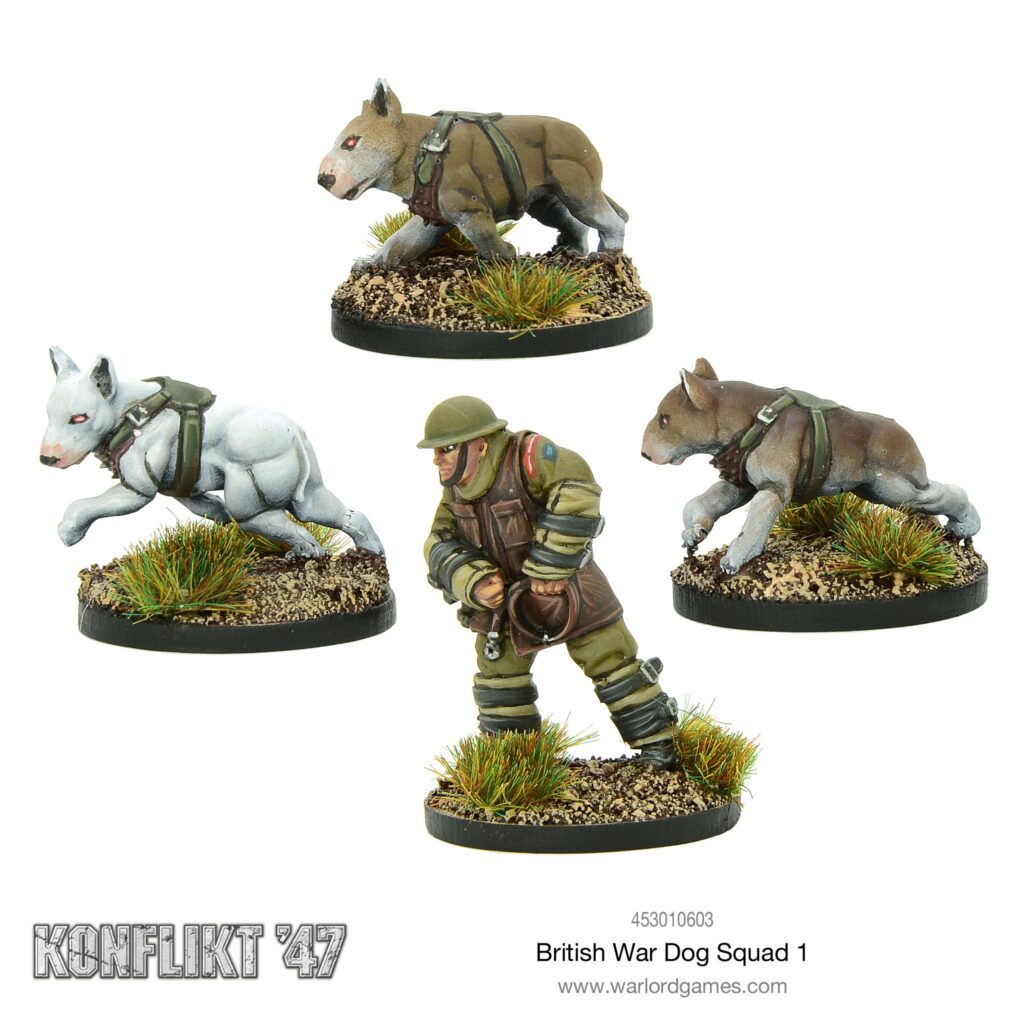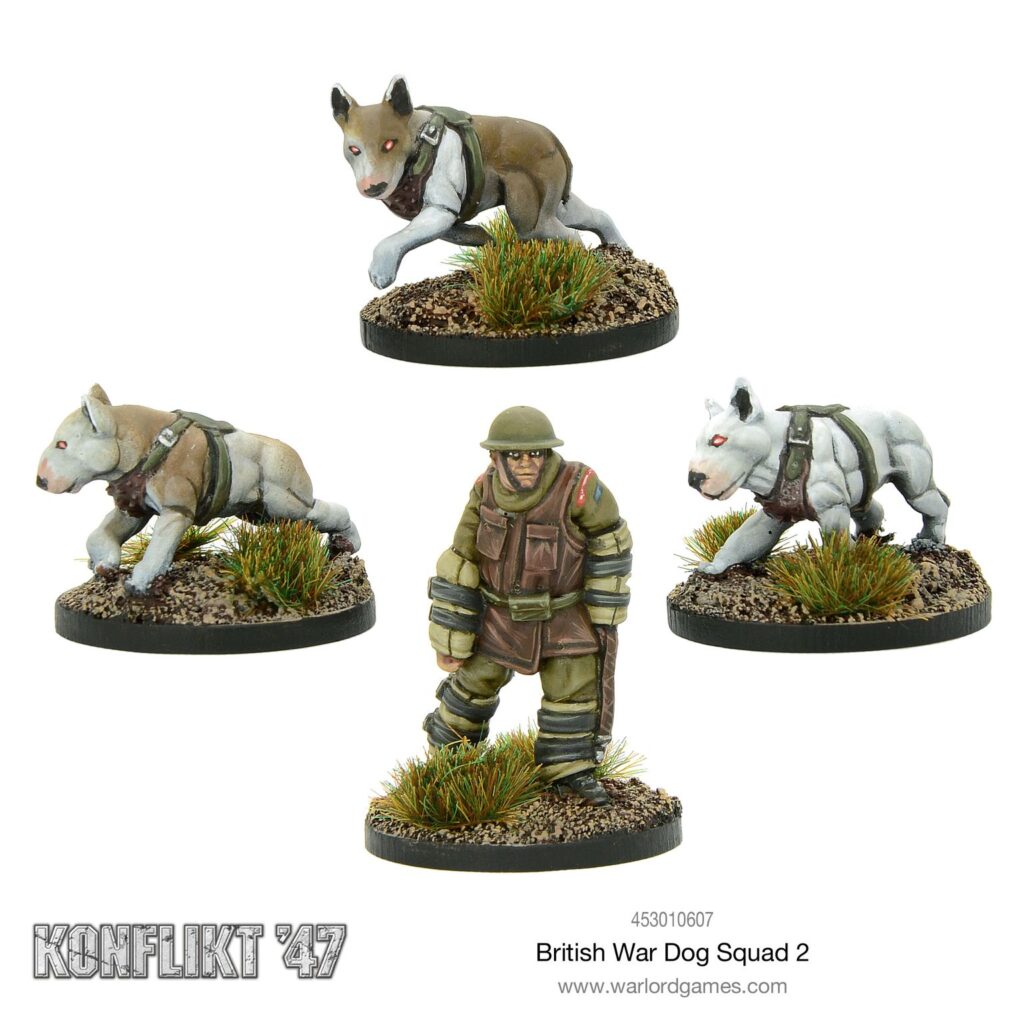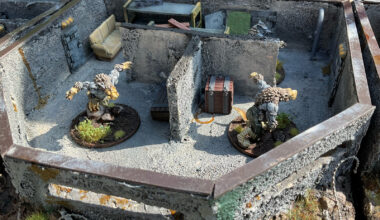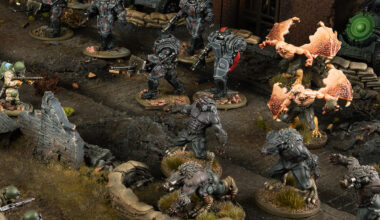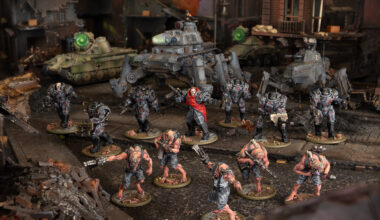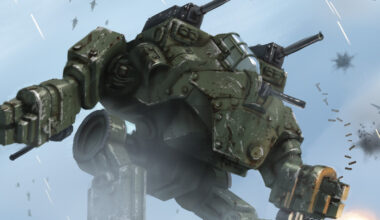The Weird War battlefields of Konflikt ’47 are often confusing and terrifying places. Giant walking tanks, genetic monstrosities, and machine-gun-toting automata abound, not to mention the risen dead! For the average ‘Tommy Atkins’ on the ground, it can all get a bit much sometimes. Luckily, the boffins at Headquarters’ Genetics Branch have taken man’s best friend… and made him better! Courtesy of a rigorous breeding program and a healthy dash of Rift-tech, it’s time to give Tommy some four-legged friends!
Part bull terrier, part mastiff, and (allegedly) part corgi, with Rift-tech enhancements to their size, power, and savagery, the War Dogs were introduced to the British Army as a direct reaction to the German deployment of the undead Totenkorps and (later) Japanese Shibito, being quite unaffected by the psychological effects of having to fight walking corpses, and more than capable of tearing them limb from limb. Their presence at the front had a somewhat mixed effect on friendly morale, with the confidence imbued by their combat effectiveness being tempered by their rather concerning inability to distinguish friend from foe! Despite their propensity for indiscriminate mauling, they are undeniably a useful (if unpredictable) weapon on the battlefield, and are increasingly being deployed even in areas without a Totenkorps threat, as they are equally capable of engaging the monstrous Nachtjäger or Soviet Ursus. When unleashed against the common infantryman (those not infused with genetic ‘improvements’), the effect is predictably dramatic, and probably ought to be against some convention or other!
Tactically, the War Dogs’ usage would be recognisable to a Roman Legionary – cry havoc, and let ‘em slip! Of course, once they’re off the leash, getting them back under control during a battle is simply impossible, so they’re normally kept under ‘control’ by their handlers until needed. These very brave men, wearing heavily-padded suits, have managed to form something akin to a bond with their canine comrades (rumours that they’ve undergone some form of similar genetic alteration are completely unfounded), and can be found guiding the dogs into the optimum position to attack… and running in the opposite direction once they’ve been let loose! As a general rule, the most any one handler can manage is three dogs, which is still a considerable challenge for even the strongest of men, and assignment to the Canine Corps is something few relish, with many handlers ‘volunteering’ from the confines of a Royal Military Police cell.
With British efforts to exploit Rift-tech largely focussing on Turing’s development of artificial intelligence, the War Dogs represent something of a departure into the shadowy (and morally grey) area of genetic manipulation. While not using the human subjects of the Soviet and German programmes, the success of the War Dog project has at least proven the viability of the concept to the British military, particularly to the troops at the front. Whether the programme will be developed further is unknown, but the dogs themselves show no sign of disappearing from British forces any time soon!
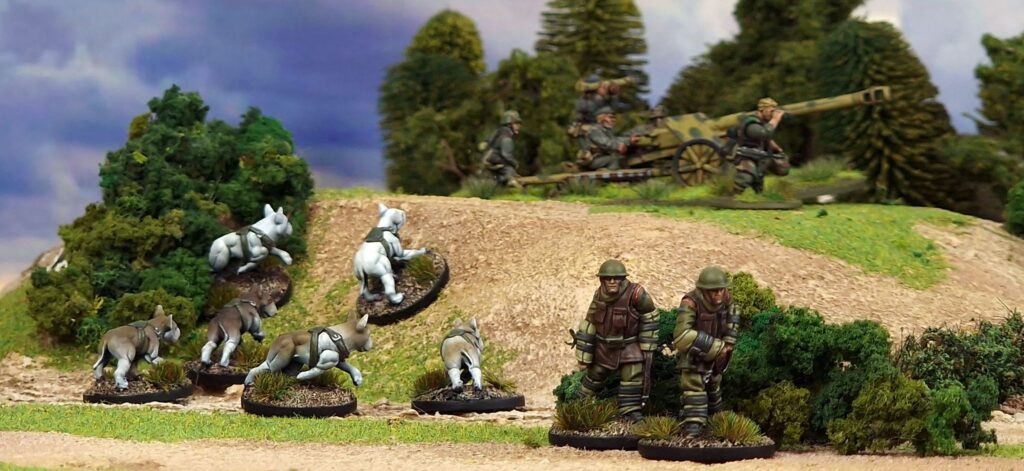
In games of Konflikt ’47, War Dogs make an appearance in Resurgence, the first of the two supplement books, as an intriguing option for British players. Comprising one to three handlers and six to nine dogs, they’re an affordable (10 points per handler, 7 points per dog) enough unit that can wreak absolute havoc (and cause some comedy) if used smartly. While only counting as Regular infantry when guided by their handlers, once unleashed they gain the Fast, Fanatics, and Tough Fighters rules, as well as becoming immune to Horror. At this point, they become furry guided (well, sort of guided) missiles, automatically making Run moves towards the nearest units (friend or foe!) and assaulting them if possible! Given Fanatics and Tough Fighters, any close combat involving them will go the distance, and every round that passes increases the chance of a few bad rolls wiping out the enemy unit. Of course, the fact that they will charge at friend or foe with equal abandon means that it’s best to ensure they’re well within the enemy ranks before letting them go, which can sometimes be tough due to their relative fragility against shooting. A particularly nasty trick that I’m fond of is to Outflank with them, and unleash them in your opponent’s backline. With 16” of movement to play with, they can very quickly chew through (literally) a swathe of artillery units, vulnerable small teams, and unaware infantry – the perfect distraction from the rest of your army!
It’s time for some canine carnage – grab your War Dogs today, and drive your opponent barking mad!
